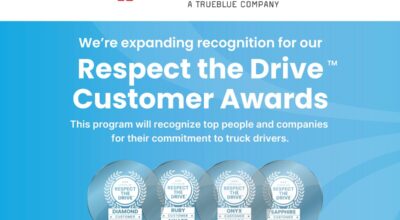The death of long haul trucking: What’s happening, why it’s happening, and alternatives

The Bureau of Labor Statistics (BLS) reported nearly two million tractor-trailer truck drivers were on the road in the U.S. in 2023, many of them long-haul drivers. The BLS projects a 5% growth in the number of heavy and tractor-trailer truck drivers between 2023 and 2033. Yet, some industry insiders suggest that the long-haul trucking model is dying.
Here are a couple explanations as to why, along with an alternative for businesses that are responsible for transporting goods.
Explanation #1: Truck driver shortage
One of the most noteworthy changes to long-haul driving today is the ongoing shortage of qualified drivers. If current trends continue, the American Trucking Associations (ATA) predicts the driver shortage could surpass 160,000 drivers by 2030, more than double the present estimate.
The reasons for this shortage are complex, stemming from the industry’s structure and workforce trends. As the current workforce ages, retirements continue to reduce the number of available drivers, and the industry faces challenges in attracting younger replacements. Additionally, the underrepresentation of female drivers widens the gap. While women represent nearly half of the U.S. workforce, their presence in trucking remains low.
Other factors contributing to the driver shortage include:
- Drug testing disqualifications: Many prospective drivers fail to pass drug tests, which has become a more prominent issue as several states have legalized marijuana while the federal government still classifies it as illegal.
- Age restrictions: The federal requirement that interstate commercial drivers must be at least 21 limits the transition from high school graduation to full-time trucking.
- Infrastructure issues: Difficulties in finding overnight parking and managing traffic congestion limit a driver’s ability to deliver loads efficiently.
- Strict hiring standards: Many potential drivers struggle to meet the stringent hiring standards and regulations that require clean driving records and background checks.
- Decreasing training completion: Fewer people are pursuing and completing truck driver training, further shrinking the qualified talent pool.
Without enough long-haul drivers, sustaining the current delivery model will become increasingly challenging. However, a shortage of drivers is not the only reason this model may face challenges.
Explanation #2: Drivers being replaced by automated trucks
Another notable change within the trucking industry is the emergence of driverless vehicles. A 2022 study conducted by researchers from Carnegie Mellon University and the University of Michigan reveals that, if this delivery model is employed, it could affect up to 94% of long-haul trucking operation hours.
The way it would work is by using automated trucks for less complex parts of the route, such as on the highways. Then, the automated trucks would enter some type of “transfer hub,” where a human driver would take over and complete the more complex portions of the route (all the roads between the highway and delivery location).
Overall, this could equate to the loss of somewhere between 300,000 and 400,000 long-haul jobs, according to the study, depending on the type of analysis being conducted. Neither scenario is good for companies responsible for transporting goods from one location to the next. But what’s the alternative?
Alternative to long-haul trucking
A short haul provider, like Centerline Drivers, is one option to consider. The benefit of a short haul approach is that, because it involves taking the “more complex” routes, these jobs are less at risk of being replaced by automated trucks.
Short haul routes are also more appealing to many new drivers. This is because they don’t have the hassles faced by long-haul drivers, such as those related to being gone for weeks at a time, having to essentially live in their rig, and dealing with poor work-life balance.
Instead, short routes allow drivers to be home every night to spend time with their friends and families. They also provide the comfortability of familiarity as the drivers are likely to be more familiar with local roads and destinations.
If you’re interested in implementing a short haul trucking model or you want to find ways to make your current short-haul model more efficient, contact Centerline today.


